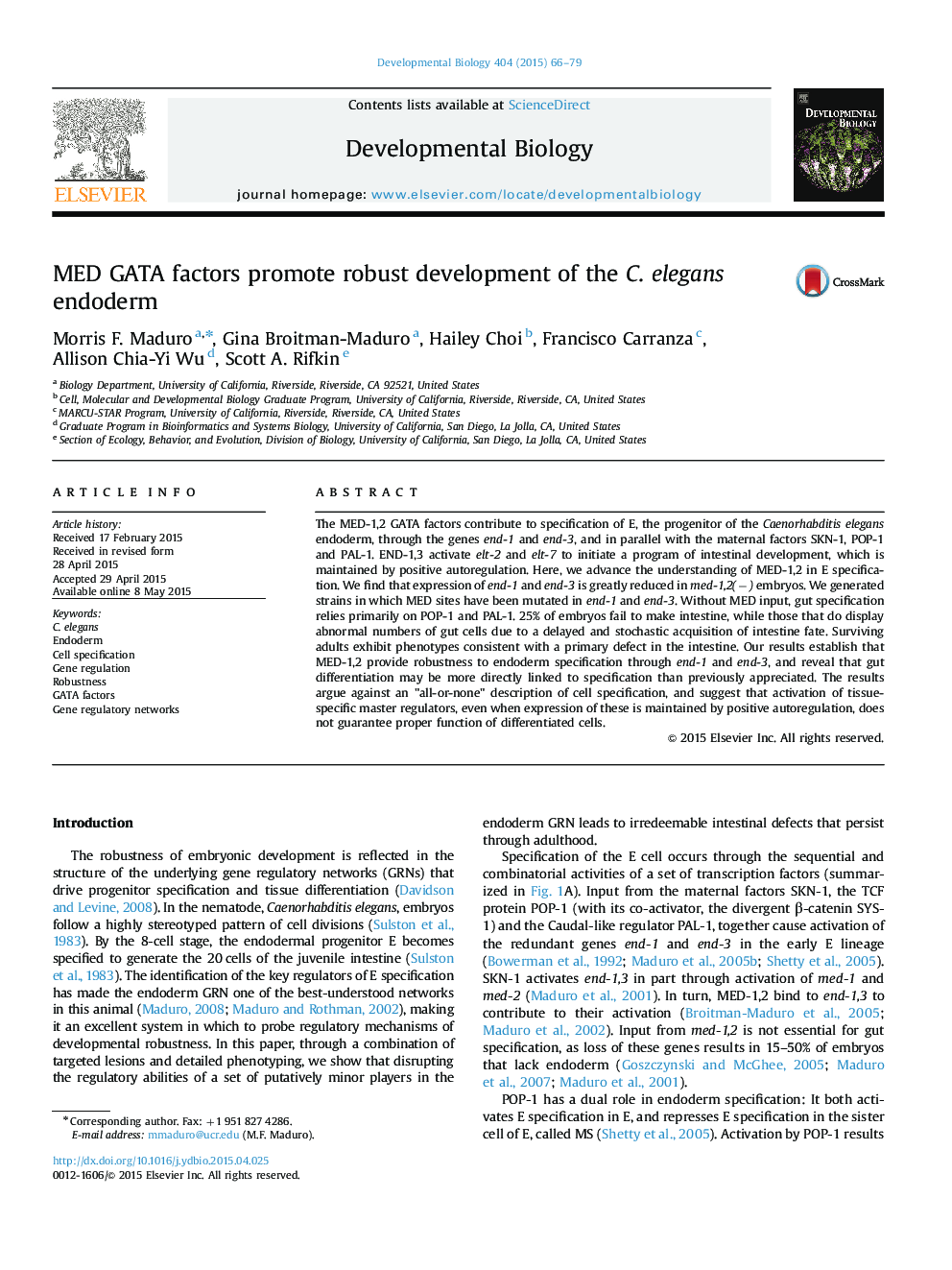| Article ID | Journal | Published Year | Pages | File Type |
|---|---|---|---|---|
| 2172904 | Developmental Biology | 2015 | 14 Pages |
•Loss of MED-1,2 binding sites in end-1,3 results in variable gut abnormalities.•Acquisition of intestinal fate is not an all-or-none event.•Hypomorphic gut specification causes adult defects similar to caloric restriction.•Defects in early specification can manifest through differentiation.
The MED-1,2 GATA factors contribute to specification of E, the progenitor of the Caenorhabditis elegans endoderm, through the genes end-1 and end-3, and in parallel with the maternal factors SKN-1, POP-1 and PAL-1. END-1,3 activate elt-2 and elt-7 to initiate a program of intestinal development, which is maintained by positive autoregulation. Here, we advance the understanding of MED-1,2 in E specification. We find that expression of end-1 and end-3 is greatly reduced in med-1,2(−) embryos. We generated strains in which MED sites have been mutated in end-1 and end-3. Without MED input, gut specification relies primarily on POP-1 and PAL-1. 25% of embryos fail to make intestine, while those that do display abnormal numbers of gut cells due to a delayed and stochastic acquisition of intestine fate. Surviving adults exhibit phenotypes consistent with a primary defect in the intestine. Our results establish that MED-1,2 provide robustness to endoderm specification through end-1 and end-3, and reveal that gut differentiation may be more directly linked to specification than previously appreciated. The results argue against an "all-or-none" description of cell specification, and suggest that activation of tissue-specific master regulators, even when expression of these is maintained by positive autoregulation, does not guarantee proper function of differentiated cells.
